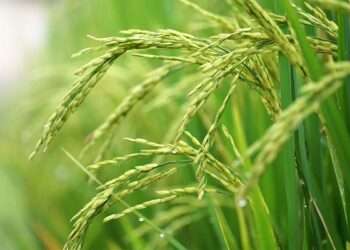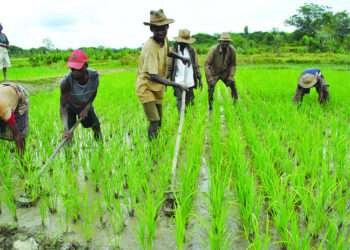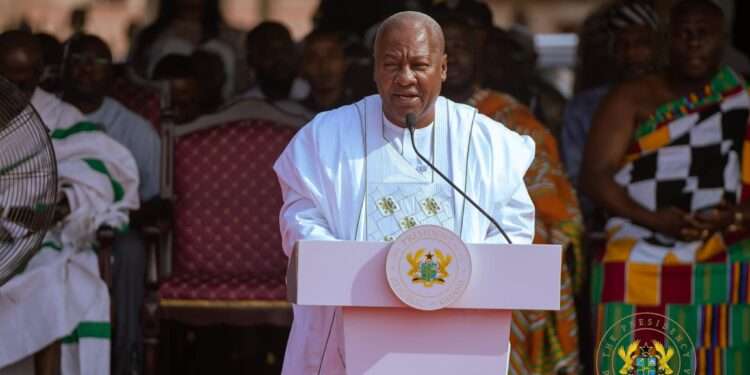Cocoa futures jumped to multi-year highs, underpinned by global production shortfall, positive cocoa demand and adverse weather conditions amongst others.
September London cocoa climbed 66 pounds, or 2.6 per cent to 2,613 pounds a tonne, hitting a fresh 46-year high of 2,615 pounds.
September New York cocoa gained $92, or 2.8 per cent, to $3,353 a tonne, the highest in more than seven years.
Dealers said funds were extending a net long position against the backdrop of tight global supplies.
The International Cocoa Organisation (ICCO), in its latest report, stated that as at 5th June 2023, cumulative arrivals of cocoa beans in Côte d’Ivoire were seen at 2.104 million tonnes, down by 4.8 per cent (or -100,000 tonnes) compared to 2.204 million tonnes recorded during the corresponding period a year earlier.
According to the ICCO report, recent heavy downpours have been reported in major producing countries and have led to heightened fears of disease outbreaks as well as over the quality of the mid-crop cocoa beans. It noted that poor bean quality has been reported in Côte d’Ivoire, with cocoa bean counts averaging 120 for every 100 grams.
Furthermore, the growing concern over an El Niño climatic phenomenon developing later in the year has been making the headlines. In West Africa, El Niño is linked to dry weather conditions and depending on its severeness, can be detrimental to cocoa production.
“Moreover, inputs such as fertiliser prices continue to be impacted by the war in Ukraine though fertilizer prices are progressively declining, historically they are still significantly high and this could deter farmers from its usage, which could in turn affect cocoa production,” the report added.
Raw Sugar Futures Rise Sharply
Meanwhile, raw sugar futures rose sharply during the closing session of the week, but recorded a 5.3 per cent weekly loss on the Intercontinental Exchange (ICE), as the July contract expired with a modest delivery, while Robusta Coffee saw a large downward correction for the week.
July raw sugar was up 0.82 cents, or 3.7 per cent, at 22.89 cents per pound. Dealers said the overall mood remained bearish with raw sugar posting a weekly loss above 5 per cent partly due to strong production in Brazil.
August white sugar gained $12.80, or 2.1 per cent, to $633.40 a tonne, but stumbled to a weekly loss of 3.6 per cent.
Research firm, BMI, noted that the strength of the Brazilian harvest has begun to weigh on prices as data shows a sharp upturn in average yields in the world’s top producer.
According to agricultural consulting firm, Datagro, Brazil’s sugar cane crushing for the 2023/24 season is expected to increase to 606.5 million tonnes from 598.50 million tonnes previously estimated. Datagro based its projections on the steady rainfall in the cane fields which is expected to favour cane production.
Coffee futures also traded in bearish territory as September Arabica coffee dropped 2.6 cents, or 1.6 per cent, at $1.59 per pound, having hit a five-month low of $1.5775 set the previous day. The contract lost 3.5 per cent in the week.
September coffee was down $79, or 3.1 per cent, to $2,491 a tonne. The contract was down 7 per cent in the week.
Consultants Safras & Mercado said the harvest in Brazil was 45 per cent complete, as of June 27, up from 39 per cent at the same stage last year but behind the five-year average of 48 per cent.
According to the latest data by the United States Department of Agriculture (USDA), World coffee production for 2023/24 is forecast at 4.3 million bags, 60 kilogrammes higher than the previous year to 174.3 million. With additional supplies underpinned by rising demand, global exports are expected up 5.8 million bags to a record 122.2 million primarily on strong shipments from top producer, Brazil. With global consumption forecast at a record 170.2 million bags, ending inventories are expected to remain tight at 31.8 million bags.
Brazil combined Arabica and Robusta harvest is forecast up 3.8 million bags to 66.4 million in 2023/24. Arabica output is forecast to improve 4.9 million bags to 44.7 million.
Vietnam production is forecast to rebound 1.6 million bags to 31.3 million due to higher yields attributed to favorable weather. Arabica production in Ethiopia, Africa’s largest producer, is forecast nearly flat at 8.4 million bags and remains the world’s third-largest Arabica producer behind Brazil and Colombia.
READ ALSO: Do Account On Cost Incurred In Conducting Assin North by-election- Solidaire Ghana To Gov’t





















